
How to use natural pest controls
As a home gardener, one of the biggest challenges is preventing pests from destroying your plants.
In this article, we’ll discuss a range of natural pest control methods, including the use of beneficial insects, natural sprays plus how to protect your plants from pests.
In this article, we’ll discuss a range of natural pest control methods, including the use of beneficial insects, natural sprays plus how to protect your plants from pests.
What are beneficial insects?
Beneficial insects are insects that can be used in natural pest control programmes to manage or eliminate pest populations in a natural and environmentally friendly way. Some of the most common beneficial insects used in natural pest controls include:
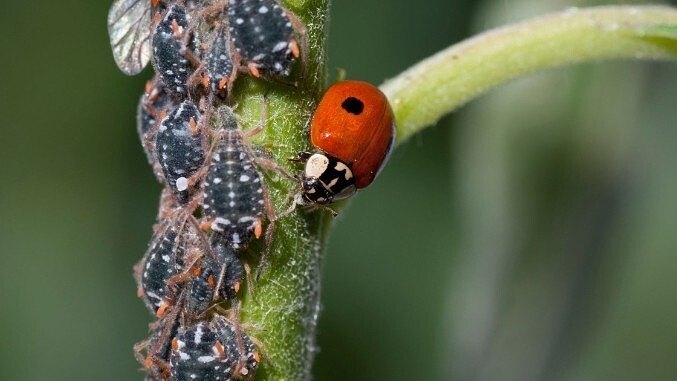
Ladybirds:
A voracious predator that feeds on aphids, mites, and other soft-bodied insects. They are particularly effective in controlling aphid populations.
Ladybirds are the gardeners’ favourite for aphid control - They do wonders in the garden or greenhouse! The adult and the larvae are completely ravenous and will eat any greenfly or blackfly in their path. The ladybirds we stock are the red, two-spotted ladybird, named Adalia Bipunctata – a native species to the UK.
Adult ladybirds can lay up to 50 yellow ladybird eggs a day under the leaves of plants and up to 1500 in their life to continue to cycle of natural pest control. The larvae are a grey colour with orange markings and measure up to be roughly 0.5mm long, they are much more voracious than their parents.
A voracious predator that feeds on aphids, mites, and other soft-bodied insects. They are particularly effective in controlling aphid populations.
Ladybirds are the gardeners’ favourite for aphid control - They do wonders in the garden or greenhouse! The adult and the larvae are completely ravenous and will eat any greenfly or blackfly in their path. The ladybirds we stock are the red, two-spotted ladybird, named Adalia Bipunctata – a native species to the UK.
Adult ladybirds can lay up to 50 yellow ladybird eggs a day under the leaves of plants and up to 1500 in their life to continue to cycle of natural pest control. The larvae are a grey colour with orange markings and measure up to be roughly 0.5mm long, they are much more voracious than their parents.
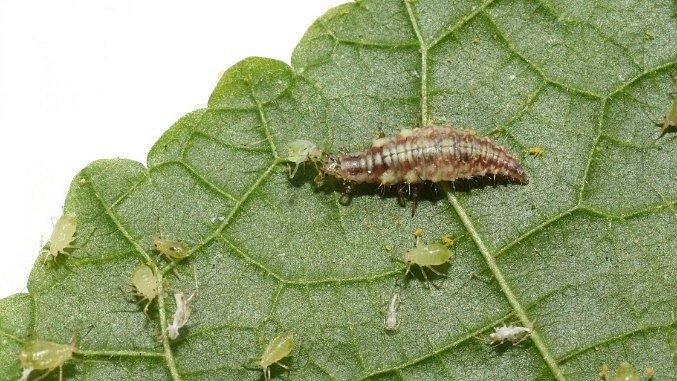
Lacewings:
Another group of predators that are effective against aphids, mealybugs, whiteflies, and other soft-bodied insects. Their larvae have large mandibles that they use to capture and devour prey.
Lacewing larvae are sometimes known as predator of aphids and carry the nickname of “aphid lion” as one larva alone can consume 100 – 600 aphids within its life.
The adult lacewings hibernate over the winter and breed in the summer. The first larvae that emerge are brown and roughly 4mm long. The older larvae are much more pale and are around 13mm long with bristles on their back. The young larva of predatory lacewing, are an extremely active predator with large pincers used to attack, hold and suck the juices from the pest body.
Lacewings are supplied as juveniles or larvae; this depends on the time of year.
Another group of predators that are effective against aphids, mealybugs, whiteflies, and other soft-bodied insects. Their larvae have large mandibles that they use to capture and devour prey.
Lacewing larvae are sometimes known as predator of aphids and carry the nickname of “aphid lion” as one larva alone can consume 100 – 600 aphids within its life.
The adult lacewings hibernate over the winter and breed in the summer. The first larvae that emerge are brown and roughly 4mm long. The older larvae are much more pale and are around 13mm long with bristles on their back. The young larva of predatory lacewing, are an extremely active predator with large pincers used to attack, hold and suck the juices from the pest body.
Lacewings are supplied as juveniles or larvae; this depends on the time of year.
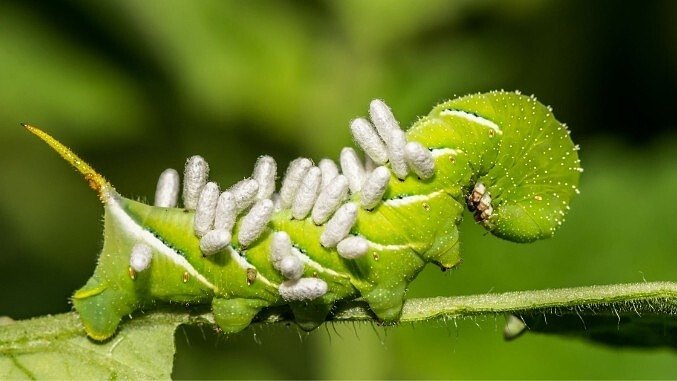
Parasitic wasps:
A diverse group of insects that lay their eggs in or on the bodies of other insects. When the wasp larvae hatch, they feed on the host insect, ultimately killing it. Parasitic wasps can be used to control a wide range of pest insects, including caterpillars, beetles, and aphids.
A diverse group of insects that lay their eggs in or on the bodies of other insects. When the wasp larvae hatch, they feed on the host insect, ultimately killing it. Parasitic wasps can be used to control a wide range of pest insects, including caterpillars, beetles, and aphids.
These tiny braconid wasps are released into the same environment as the aphids and will lay a single egg inside their prey, after 2/3 days the egg hatches and the wasp larva will emerge to feed on the aphid. If you are aware that you have an aphid problem, the sooner you release the wasps the more effective they will be.
These parasitic wasps are not the same as the wasps we often find buzzing around after a picnic in the sun!

Predatory mites:
Phytoline is a natural pest control called Phytoseiulus persimilis, a well-known predator that eats large numbers of two spotted mite/spider mites. Phytoline is a standard treatment for professional growers and used in treatments for tomatoes, cucumbers, strawberries and ornamentals among others.
Phytoline is a natural pest control called Phytoseiulus persimilis, a well-known predator that eats large numbers of two spotted mite/spider mites. Phytoline is a standard treatment for professional growers and used in treatments for tomatoes, cucumbers, strawberries and ornamentals among others.
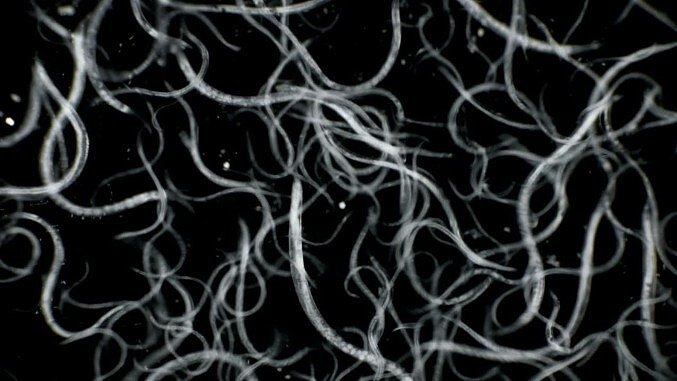
Nematodes:
Nematodes can also be used as a form of natural pest control. Specifically, entomopathogenic nematodes are a type of nematode that are used to control insect pests. Once applied to soil or plant surfaces, and then they actively search for host insects to infect.
Nematodes can also be used as a form of natural pest control. Specifically, entomopathogenic nematodes are a type of nematode that are used to control insect pests. Once applied to soil or plant surfaces, and then they actively search for host insects to infect.
Once inside the host, the nematodes release bacteria that kill the insect within a few days. The nematodes then reproduce inside the insect and emerge from the cadaver to find new hosts.
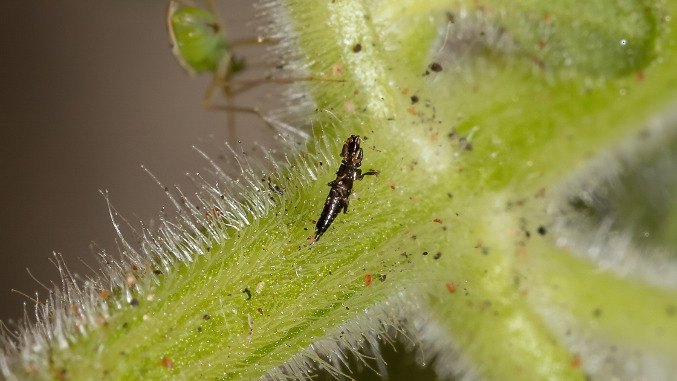
How to use natural pest controls
- Identify the pest: Before implementing any pest control measures, it's important to identify the pest species you're dealing with. This will help you determine the appropriate natural control method to use.
- Choose the appropriate natural control method: Once you know what type of pest you're dealing with, research and select the appropriate beneficial insect. This could be in the form of predators, parasitoids, or competitors.
- Release the control agent: Depending on the beneficial insect you've selected, you may need to release it into the environment in a specific manner. Some natural pest controls can simply be released into the environment, while others may require specific application methods, such as spraying or drenching. Always follow the instructions for the best results.
- Monitor the effectiveness: Keep an eye on the population of the pest and monitor the effectiveness of the beneficial insect. If necessary, you may need to adjust the release rate or timing of the agent to ensure it's effectively controlling the population, or apply again when the weather is warmer or cooler, depending on when the first application was completed.
- Evaluate the results: Once you've used the natural pest controls, evaluate the results. Did they effectively reduce the pest population? Were there any negative side effects, such as harm to non-target organisms or damage to crops? Based on your evaluation, you may need to adjust your pest control strategy for the future.
Overall, using natural pest controls can be a safe and effective way to control pests without relying on harmful chemicals. However, it's important to do your research and choose the appropriate control agent for your specific pest problem.
What else can I use to protect plants from pests?
Natural sprays are another effective strategy for pest control. These include sprays made from essential oils, like neem oil, which can deter pests and disrupt their life cycles. We stock a ready to go solution called SB Plant Invigorator, which helps to control a range of pests and preventable diseases, without harming other beneficial insects, pets, kids or the environment.
Garlic and pepper sprays can also be used in the same way, depending on the pests you are targeting. It's important to follow the instructions on the spray packaging and apply the spray at the right time for maximum effectiveness.
Garlic and pepper sprays can also be used in the same way, depending on the pests you are targeting. It's important to follow the instructions on the spray packaging and apply the spray at the right time for maximum effectiveness.
Physical barriers like mesh netting, row covers or screens can help protect your plants from some insects and other pests. These barriers allow your plants to grow without interference while preventing pests from reaching them. You can also use sticky traps or barriers to trap and kill insects like fruit flies and whiteflies.
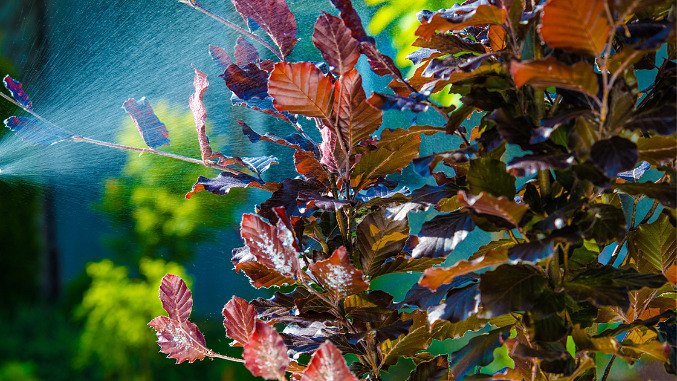
How to protect your plants from pests
Companion planting:
The practice of planting different types of crops together to prevent pests and boost the growth of your plants. Certain plants, like marigolds, can naturally repel pests like aphids and nematodes, which can damage your crops. Likewise, planting herbs like basil, dill, and coriander can attract beneficial insects like ladybirds and predatory wasps, which feed on harmful insects such as caterpillars and spider mites.
The practice of planting different types of crops together to prevent pests and boost the growth of your plants. Certain plants, like marigolds, can naturally repel pests like aphids and nematodes, which can damage your crops. Likewise, planting herbs like basil, dill, and coriander can attract beneficial insects like ladybirds and predatory wasps, which feed on harmful insects such as caterpillars and spider mites.
Crop rotation:
The process of planting different crops in the same area over a period of time to prevent pest infestations. This is because pests often specialise on one type of crop or species, and once their preferred crop is gone, they cannot survive. Therefore, rotating your crops can help curb infestations and keep your garden healthy.
The process of planting different crops in the same area over a period of time to prevent pest infestations. This is because pests often specialise on one type of crop or species, and once their preferred crop is gone, they cannot survive. Therefore, rotating your crops can help curb infestations and keep your garden healthy.
Inspect your plants often:
Regularly inspect your plants for signs of damage, such as holes in leaves or chewed stems.
Regularly inspect your plants for signs of damage, such as holes in leaves or chewed stems.
Keep your garden clean and tidy:
Practice good garden hygiene by removing fallen leaves, dead plants, and other debris that can harbour pests.
Practice good garden hygiene by removing fallen leaves, dead plants, and other debris that can harbour pests.
Use fertilisers in moderation:
Avoid over-fertilising your plants, as this can make them more susceptible to disease, making them weaker and vulnerable to pests.
Avoid over-fertilising your plants, as this can make them more susceptible to disease, making them weaker and vulnerable to pests.

Helpful videos
Discover effective ways to identify and manage aphids through the use of natural pest controls with the guidance of Fargro's expert Technical Team. Our parent company's seasoned professionals will provide you with valuable insights on how to detect aphids and implement natural control methods that are both eco-friendly and cost-effective.
If you need advice on our pest control solutions, we have a wealth of expert knowledge to assist you and your plants. With more than 75 years’ experience of supporting growers, Fargro have developed deep knowledge and expertise across every horticultural sector.
Click the link below to contact our Technical Team for more information about our natural pest controls.
Related products

Choose your pest
Choose the pest you would like to control from the list via the link below.*Please note: for orders containing live creatures, we will not accept returns on unwanted items or orders placed by mistake, due to the perishable nature of the goods.
find out more

Insect controls
Choose from sticky traps to plat sprays and more. Suitable for use on edible and ornamental crops.SHOP NOW
Tags: Natural Pest Control, natural pest controls, organic pest control
Comments (1)
Leave A Comment
Most popular articles
1
Plastic plant pots dimensions and uses2
Peat vs Peat Free - Choosing the right Potting Compost3
How to Grow Watercress at home in plant pots4
January Jobs5
March Jobs
Reply